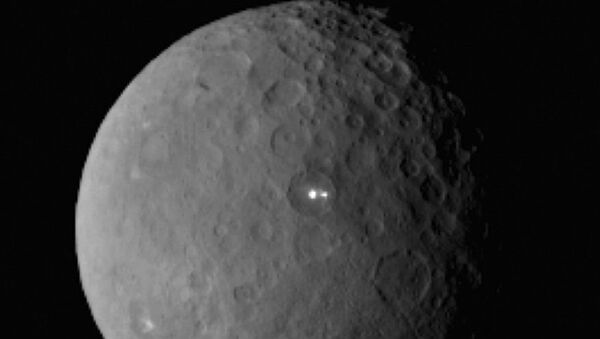Ceres, a dwarf planet in the same category as Pluto and the largest object in the asteroid belt between Mars and Jupiter, is shining two bright lights at a NASA spacecraft as it approaches.
Scientists are trying to discover the source of the lights before NASA's Dawn spacecraft arrives at Ceres on March 6, Mashable reported.
Previous Dawn images from further away showed a single light on Ceres, which was just as mysterious. Astonishingly, that one light turned out to be two – reflecting roughly 40% of the light hitting them.
"This is truly unexpected and still a mystery to us," Andreas Nathues, lead investigator for the framing camera team at the Max Planck Institute for Solar System Research in Gottingen, Germany, said in a NASA statement.
"The brightest spot [of the two] continues to be too small to resolve with our camera, but despite its size it is brighter than anything else on Ceres."
Experts have pointed to ice as the most likely answer, as scientists have previously detected water vapor coming from the surface of the dwarf planet.
Although ice would reflect more than 40% of all light hitting it, the difference may be attributed to the resolution limit of Dawn's camera at this distance, Mashable reported.
According to Chris Russell, principal investigator for the Dawn mission, the positioning of the bright spots within the same area may indicate "a volcano-like origin of the spots," but scientists will have to wait for higher resolution images before making such interpretations.
Scientists have also suggested that the bright areas could be patches of salt.
They have ruled out lava similar to that on Earth, which would shine more brightly.
Previously, the Dawn spacecraft spent 14 months studying Vesta, a giant asteroid also known as a protoplanet. Dawn is traveling at upwards of 450 miles per hour on its way to Ceres, which NASA says has never been visited by a spacecraft.
“Ceres is almost a complete mystery to us,” said Russell. “Ceres, unlike Vesta, has no meteorites linked to it to reveal its secrets. All we can predict with confidence is that we will be surprised.”






